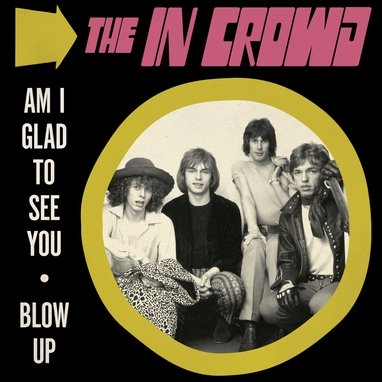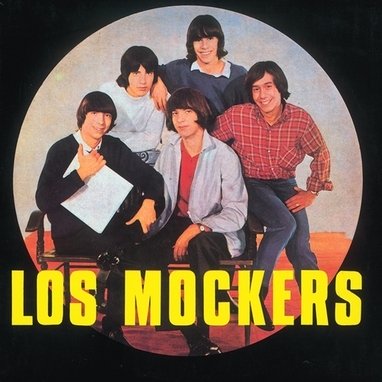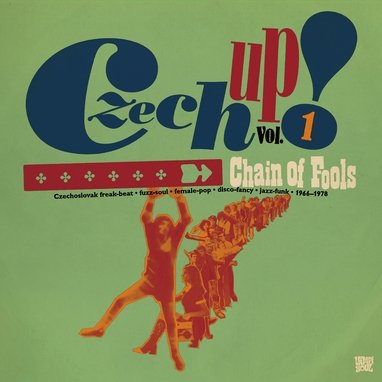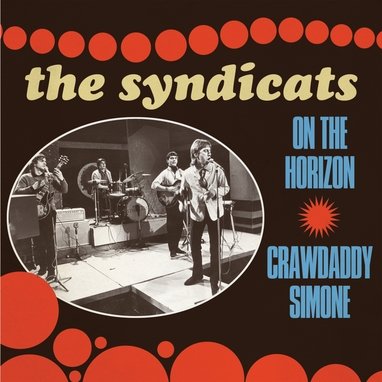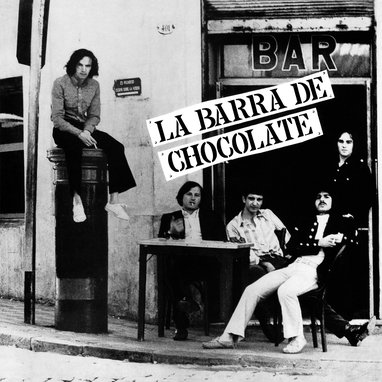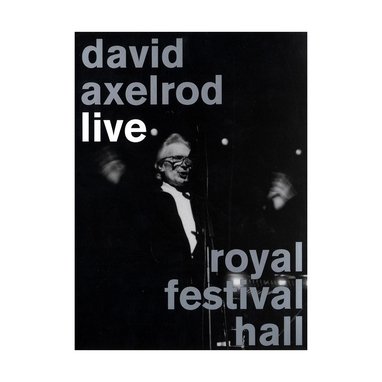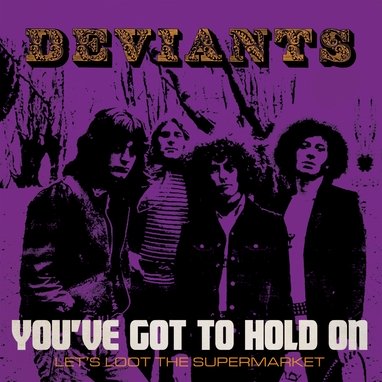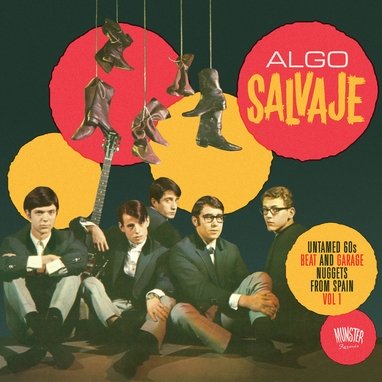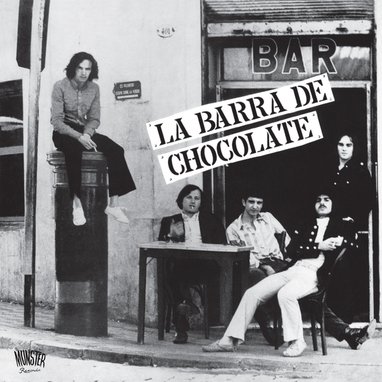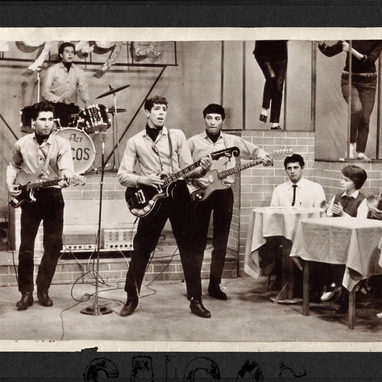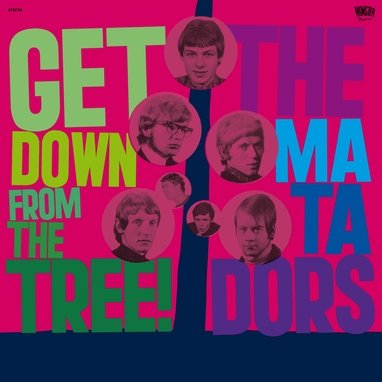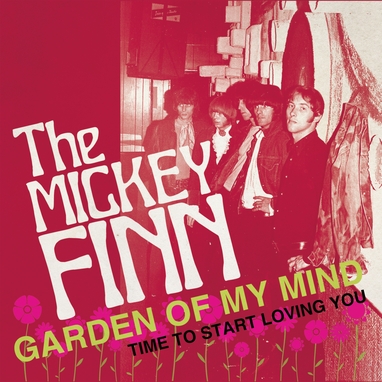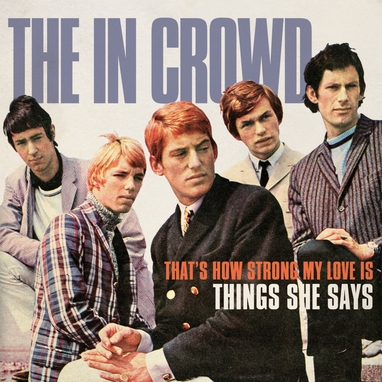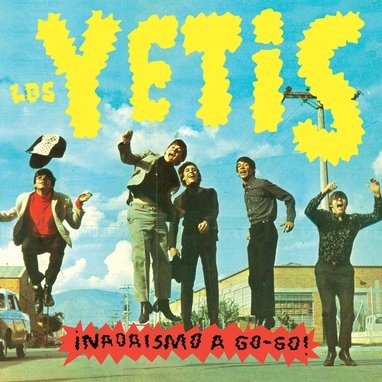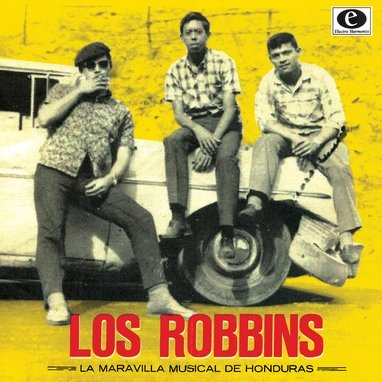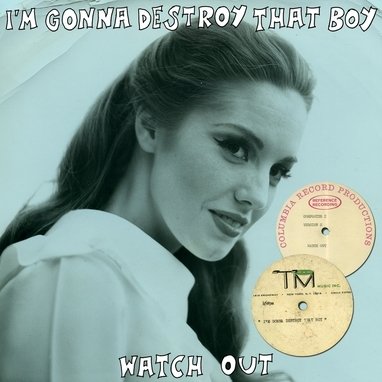The In Crowd
Am I Glad To See You
6,00€ Original price was: 6,00€.5,00€Current price is: 5,00€.
Munster
The In Crowd
Am I Glad To See You
In the second half of 1966, The In Crowd – singer Keith West, guitarist Steve Howe, bass player John Junior Wood and drummer John Twink Alder – were undergoing a radical musical transformation, replacing their soul and R&B covers with more innovative original material. The young actor David Hemmings witnessed their electrifying live set one night at Tiles on Oxford Street and was suitably impressed. Hemmings had recently been cast in a film by Italian director Michelangelo Antonioni, Blow Up, and was being outfitted for the role at a King’s Road boutique called Dandie Fashions, which, as it happened, was part-owned by The In Crowd’s manager, Anthony Rufus Isaacs. The film was set against the backdrop of then-Swingin’ London, and the director was looking for an ‘of the moment’ band to perform in a night club scene. The Velvet Underground had been his first choice, but when they were unable to secure the necessary work permits, he next approached The Who, who declined. Knowing a good opportunity when he saw one, Isaacs suggested that The In Crowd would be ideal for the role, and Hemmings’ endorsement no doubt also helped the cause.
Antonioni called the group for a breakfast meeting at the Savoy Hotel, and, over eggs, bacon and toast, they came to an informal agreement. West immediately got to work composing two songs to be used in the movie, ‘Am I Glad to See You’ and ‘Blow Up’. The group cut the tracks at a studio session produced by Tony Howard of the Bryan Morrison Agency, and a few weeks later reported to the set – a replica of Windsor’s Ricky-Tick Club – for filming. Antonioni’s head was still full of visions of The Who, so the scene required Howe to smash his guitar Pete Townshend-style, a concept he was not altogether comfortable with, even though the instrument in question was only a flimsy balsa wood replica fashioned by the prop department. Whether it was Howe’s discomfort with the destruction or the fact that, as West later recalled, we larked around too much, the group was ultimately dismissed and the much better-known Yardbirds brought in to replace them. In that now famous night club scene, though, it’s a replica of Steve Howe’s Gibson that Jeff Beck pretends to play and then gleefully smashes to pieces on the stage.
The two songs The In Crowd recorded for Blow Up were shelved and remained unissued until the late 1990s. They encapsulate a thrilling moment of metamorphosis as a uniquely gifted group emerged from its mod chrysalis and unfurled its psychedelic wings for the first time. In these precise moments, The In Crowd embraced all of the promise and innovation of the sound of Tomorrow.
Mike Stax
Ugly Things Magazine
Productos relacionados
6,00€ Original price was: 6,00€.5,00€Current price is: 5,00€.
In the second half of 1966, The In Crowd – singer Keith West, guitarist Steve Howe, bass player John Junior Wood and drummer John Twink Alder – were undergoing a radical musical transformation, replacing their soul and R&B covers with more innovative original material. The young actor David Hemmings witnessed their electrifying live set one night at Tiles on Oxford Street and was suitably impressed. Hemmings had recently been cast in a film by Italian director Michelangelo Antonioni, Blow Up, and was being outfitted for the role at a King’s Road boutique called Dandie Fashions, which, as it happened, was part-owned by The In Crowd’s manager, Anthony Rufus Isaacs. The film was set against the backdrop of then-Swingin’ London, and the director was looking for an ‘of the moment’ band to perform in a night club scene. The Velvet Underground had been his first choice, but when they were unable to secure the necessary work permits, he next approached The Who, who declined. Knowing a good opportunity when he saw one, Isaacs suggested that The In Crowd would be ideal for the role, and Hemmings’ endorsement no doubt also helped the cause.
Antonioni called the group for a breakfast meeting at the Savoy Hotel, and, over eggs, bacon and toast, they came to an informal agreement. West immediately got to work composing two songs to be used in the movie, ‘Am I Glad to See You’ and ‘Blow Up’. The group cut the tracks at a studio session produced by Tony Howard of the Bryan Morrison Agency, and a few weeks later reported to the set – a replica of Windsor’s Ricky-Tick Club – for filming. Antonioni’s head was still full of visions of The Who, so the scene required Howe to smash his guitar Pete Townshend-style, a concept he was not altogether comfortable with, even though the instrument in question was only a flimsy balsa wood replica fashioned by the prop department. Whether it was Howe’s discomfort with the destruction or the fact that, as West later recalled, we larked around too much, the group was ultimately dismissed and the much better-known Yardbirds brought in to replace them. In that now famous night club scene, though, it’s a replica of Steve Howe’s Gibson that Jeff Beck pretends to play and then gleefully smashes to pieces on the stage.
The two songs The In Crowd recorded for Blow Up were shelved and remained unissued until the late 1990s. They encapsulate a thrilling moment of metamorphosis as a uniquely gifted group emerged from its mod chrysalis and unfurled its psychedelic wings for the first time. In these precise moments, The In Crowd embraced all of the promise and innovation of the sound of Tomorrow.
Mike Stax
Ugly Things Magazine
Productos relacionados
Am I Glad To See You
In the second half of 1966, The In Crowd – singer Keith West, guitarist Steve Howe, bass player John Junior Wood and drummer John Twink Alder – were undergoing a radical musical transformation, replacing their soul and R&B covers with more innovative original material. The young actor David Hemmings witnessed their electrifying live set one night at Tiles on Oxford Street and was suitably impressed. Hemmings had recently been cast in a film by Italian director Michelangelo Antonioni, Blow Up, and was being outfitted for the role at a King’s Road boutique called Dandie Fashions, which, as it happened, was part-owned by The In Crowd’s manager, Anthony Rufus Isaacs. The film was set against the backdrop of then-Swingin’ London, and the director was looking for an ‘of the moment’ band to perform in a night club scene. The Velvet Underground had been his first choice, but when they were unable to secure the necessary work permits, he next approached The Who, who declined. Knowing a good opportunity when he saw one, Isaacs suggested that The In Crowd would be ideal for the role, and Hemmings’ endorsement no doubt also helped the cause.
Antonioni called the group for a breakfast meeting at the Savoy Hotel, and, over eggs, bacon and toast, they came to an informal agreement. West immediately got to work composing two songs to be used in the movie, ‘Am I Glad to See You’ and ‘Blow Up’. The group cut the tracks at a studio session produced by Tony Howard of the Bryan Morrison Agency, and a few weeks later reported to the set – a replica of Windsor’s Ricky-Tick Club – for filming. Antonioni’s head was still full of visions of The Who, so the scene required Howe to smash his guitar Pete Townshend-style, a concept he was not altogether comfortable with, even though the instrument in question was only a flimsy balsa wood replica fashioned by the prop department. Whether it was Howe’s discomfort with the destruction or the fact that, as West later recalled, we larked around too much, the group was ultimately dismissed and the much better-known Yardbirds brought in to replace them. In that now famous night club scene, though, it’s a replica of Steve Howe’s Gibson that Jeff Beck pretends to play and then gleefully smashes to pieces on the stage.
The two songs The In Crowd recorded for Blow Up were shelved and remained unissued until the late 1990s. They encapsulate a thrilling moment of metamorphosis as a uniquely gifted group emerged from its mod chrysalis and unfurled its psychedelic wings for the first time. In these precise moments, The In Crowd embraced all of the promise and innovation of the sound of Tomorrow.
Mike Stax
Ugly Things Magazine
The In Crowd
Am I Glad To See You
In the second half of 1966, The In Crowd – singer Keith West, guitarist Steve Howe, bass player John Junior Wood and drummer John Twink Alder – were undergoing a radical musical transformation, replacing their soul and R&B covers with more innovative original material. The young actor David Hemmings witnessed their electrifying live set one night at Tiles on Oxford Street and was suitably impressed. Hemmings had recently been cast in a film by Italian director Michelangelo Antonioni, Blow Up, and was being outfitted for the role at a King’s Road boutique called Dandie Fashions, which, as it happened, was part-owned by The In Crowd’s manager, Anthony Rufus Isaacs. The film was set against the backdrop of then-Swingin’ London, and the director was looking for an ‘of the moment’ band to perform in a night club scene. The Velvet Underground had been his first choice, but when they were unable to secure the necessary work permits, he next approached The Who, who declined. Knowing a good opportunity when he saw one, Isaacs suggested that The In Crowd would be ideal for the role, and Hemmings’ endorsement no doubt also helped the cause.
Antonioni called the group for a breakfast meeting at the Savoy Hotel, and, over eggs, bacon and toast, they came to an informal agreement. West immediately got to work composing two songs to be used in the movie, ‘Am I Glad to See You’ and ‘Blow Up’. The group cut the tracks at a studio session produced by Tony Howard of the Bryan Morrison Agency, and a few weeks later reported to the set – a replica of Windsor’s Ricky-Tick Club – for filming. Antonioni’s head was still full of visions of The Who, so the scene required Howe to smash his guitar Pete Townshend-style, a concept he was not altogether comfortable with, even though the instrument in question was only a flimsy balsa wood replica fashioned by the prop department. Whether it was Howe’s discomfort with the destruction or the fact that, as West later recalled, we larked around too much, the group was ultimately dismissed and the much better-known Yardbirds brought in to replace them. In that now famous night club scene, though, it’s a replica of Steve Howe’s Gibson that Jeff Beck pretends to play and then gleefully smashes to pieces on the stage.
The two songs The In Crowd recorded for Blow Up were shelved and remained unissued until the late 1990s. They encapsulate a thrilling moment of metamorphosis as a uniquely gifted group emerged from its mod chrysalis and unfurled its psychedelic wings for the first time. In these precise moments, The In Crowd embraced all of the promise and innovation of the sound of Tomorrow.
Mike Stax
Ugly Things Magazine

